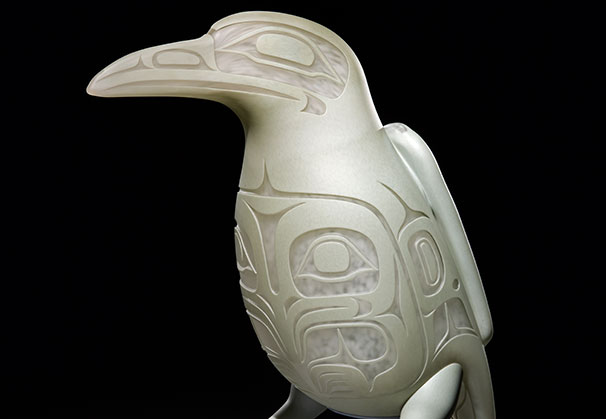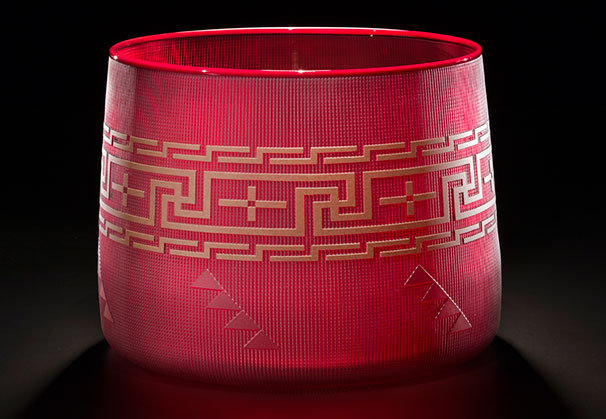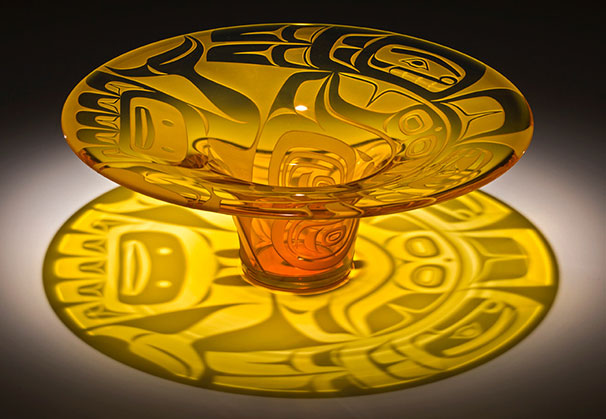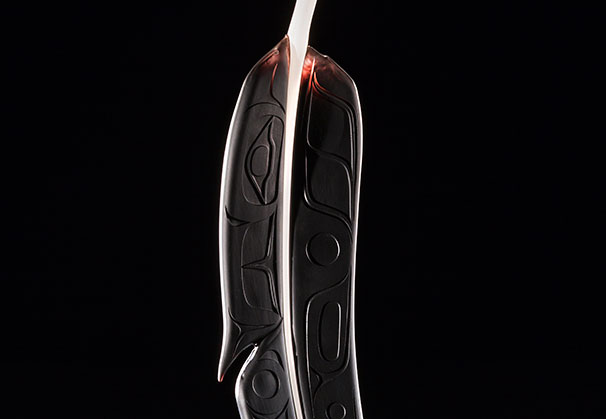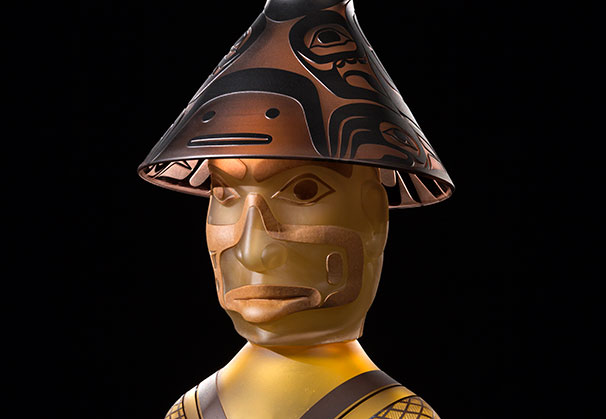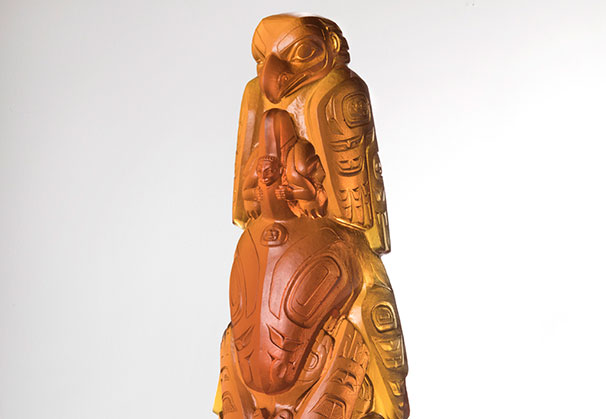Artist of the Month
March 2018

Preston Singletary
The art of Preston Singletary has become synonymous with the relationship between European glass blowing traditions and Northwest Native art. His artworks feature themes of transformation, animal spirits, and shamanism through elegant blown glass forms and mystical sand carved Tlingit designs. Singletary is represented by Traver Gallery, Seattle, Washington.
Click on each photo to the right for a full picture.
Preston Singletary

Artist Statement:
 When I began working with glass in 1982, I had no idea that I’d be so connected to the material in the way that I am. It was only when I began to experiment with using designs from my Tlingit cultural heritage that my work began to take on a new purpose and direction.
When I began working with glass in 1982, I had no idea that I’d be so connected to the material in the way that I am. It was only when I began to experiment with using designs from my Tlingit cultural heritage that my work began to take on a new purpose and direction.
Over time, my skill with the material of glass and traditional form line design has strengthened and evolved, allowing me to explore more fully my own relationship to both my culture and chosen medium. This evolution, and subsequent commercial success, has positioned me as an influence on contemporary indigenous art.
Through teaching and collaborating in glass with other Native American, Maori, Hawaiian, and Australian Aboriginal artists, I’ve come to see that glass brings another dimension to indigenous art. The artistic perspective of indigenous people reflects a unique and vital visual language that has connections to the ancient codes and symbols of the land, and this interaction has informed and inspired my own work.
My work with glass transforms the notion that Native artists are only best when traditional materials are used. It has helped advocate on the behalf of all indigenous people - affirming that we are still here - that we are declaring who we are through our art in connection to our culture.
My work continues to evolve and connect my personal cultural perspective to current modern art movements, and I have received much attention for striving to keep the work fresh and relevant. I have been honored that my success has inspired other artists from underrepresented indigenous cultures to use glass and other non-traditional materials in their work, and hope that I can continue to encourage more innovation in this area as my career progresses.
About Preston Singletary
Preston Singletary learned the art of glassblowing by working with artists in the Seattle area including Benjamin Moore and Dante Marioni. As a student and assistant, he initially focused on mastering the techniques of the European tradition. His work took him to Kosta Boda (Sweden) where he studied Scandinavian design and met his future wife. Throughout his 30+ years of glassblowing experience, he has also had opportunities to learn the secrets of the Venetian glass masters by working with Italian legends Lino Tagliapietra, Cecco Ongaro, and Pino Signoretto. In 2010, he was awarded an honorary Doctor of Arts degree from the University of Puget Sound.
Recognized internationally, Singletary’s artworks are included in museum collections such as The British Museum (London, UK), The Museum of Fine Arts (Boston, MA), The Seattle Art Museum (Seattle WA), the Corning Museum of Glass (Corning, NY), the Mint Museum of Art and Design (Charlotte, NC), the Heard Museum (Phoenix, AZ), and the Smithsonian Institution (Washington, DC).
Singletary maintains an active schedule by teaching, lecturing and exhibiting internationally. In 2009, the Museum of Glass in Tacoma, WA, launched a major mid-career survey of his work, entitled “Preston Singletary: Echoes, Fire, and Shadows”. In 2018 he will launch a new traveling exhibition with the Museum of Glass titled “Raven and the Box of Daylight,” which will push the boundaries of glass as a medium for storytelling.
Click here for an artist's resume.
Acknowledgment of Gallery:
We are grateful to Traver Gallery, Seattle, Washington, for providing the Artist of the Month.

The Art Alliance for Contemporary Glass (AACG) is a not-for-profit organization and leading resource for glass collectors, art enthusiasts, artists, gallerists, museum personnel, and educators on all things related to glass art. AACG provides a collaborative place for robust conversations about glass art, including its production, techniques, and trends. We also encourage and support the glass community through annual grants and artist scholarships.





